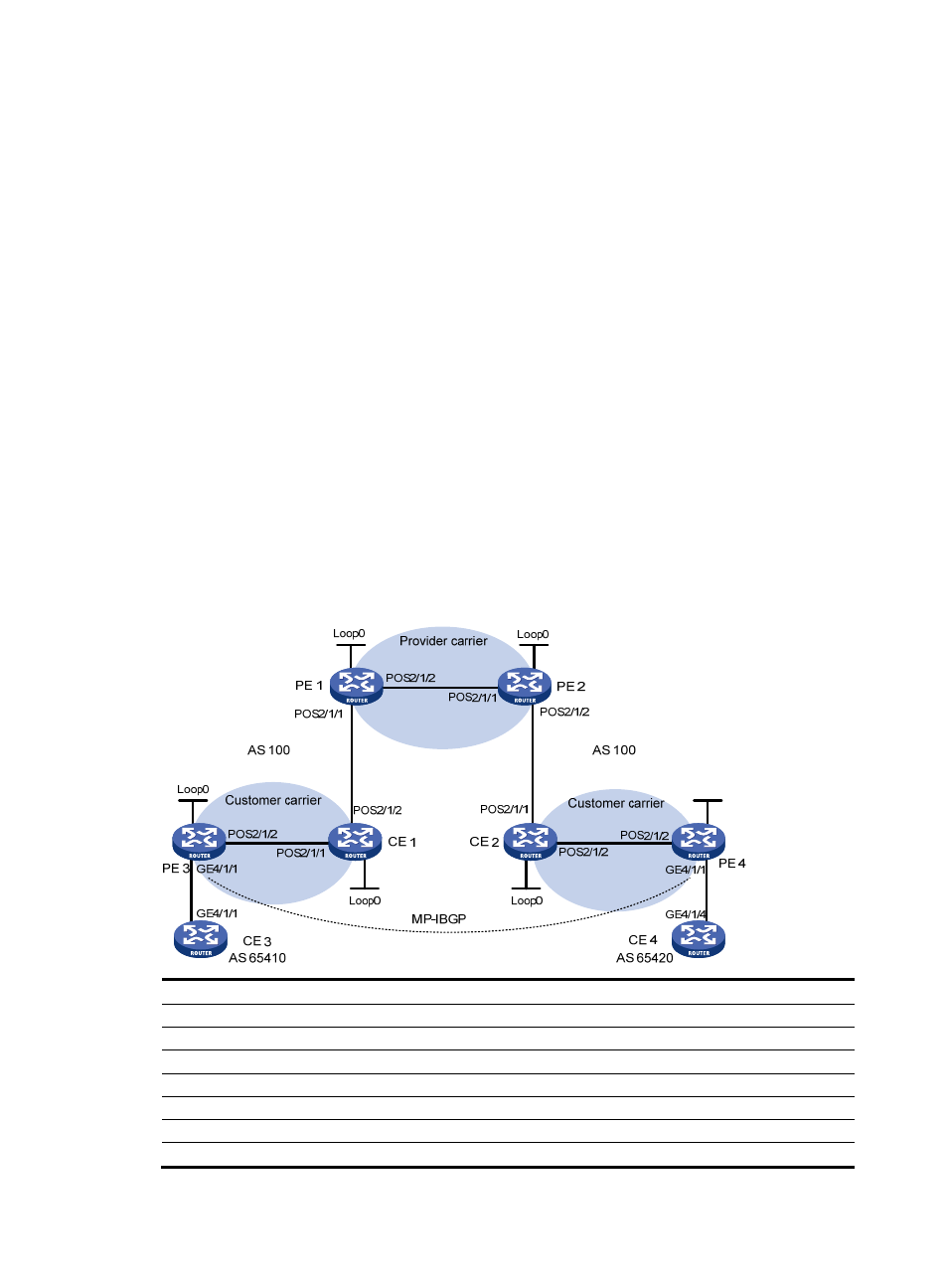Configuring carrier’s carrier, Network requirements – H3C Technologies H3C SR8800 User Manual
Page 401

390
5 packet(s) transmitted
5 packet(s) received
0.00% packet loss
round-trip min/avg/max = 1/1/1 ms
Configuring carrier’s carrier
Network requirements
Configure carrier’s carrier for the scenario shown in
. .In this scenario:
•
PE 1 and PE 2 are the provider carrier’s PE routers. They provide VPN services to the customer
carrier.
•
CE 1 and CE 2 are the customer carrier’s routers. They are connected to the provider carrier’s
backbone as CE routers.
•
PE 3 and PE 4 are the customer carrier’s PE routers. They provide IPv6 MPLS L3VPN services to end
customers.
•
CE 3 and CE 4 are customers of the customer carrier.
The key to the carrier’s carrier deployment is to configure exchange of two kinds of routes:
•
Exchange of the customer carrier’s internal routes on the provider carrier’s backbone.
•
Exchange of the end customers’ internal routes between PE 3 and PE 4, the PEs of the customer
carrier. In this process, an MP-IBGP peer relationship must be established between PE 3 and PE 4.
Figure 90 Network diagram
Device
Interface
IP address
Device
Interface
IP address
CE 3
GE4/1/1
2001:1::1/96
CE 4
GE4/1/1 2001:2::1/96
PE 3
Loop0
1.1.1.9/32
PE 4
Loop0
6.6.6.9/32
GE4/1/1
2001:1::2/96
GE4/1/1
2001:2::2/96
POS2/1/2
10.1.1.1/24
POS2/1/2 20.1.1.2/24
CE 1
Loop0
2.2.2.9/32
CE 2
Loop0
5.5.5.9/32
POS2/1/1
10.1.1.2/24
POS2/1/1
21.1.1.2/24
POS2/1/2
11.1.1.1/24
POS2/1/2 20.1.1.1/24
